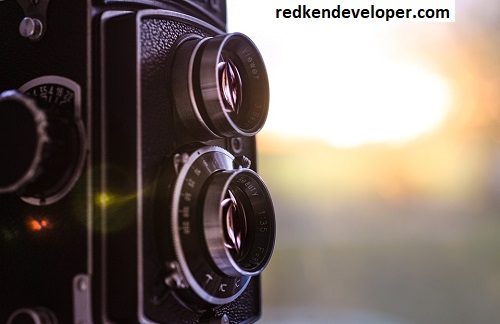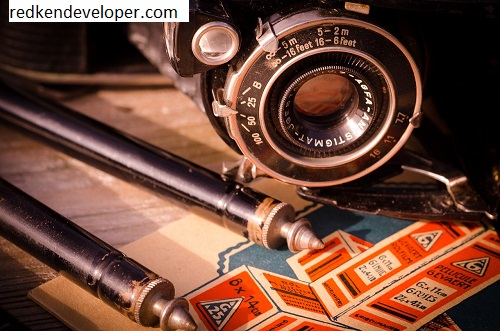The Complete Guide to Film Developing Kits-What You Need to Know:
Film Developing Kit:
Film Developing Kit digital revolution might have muted film photography, but it is not dead. Many passionate photographers, amateur or professional, enjoy the tangible aesthetic of film photography. One of the best parts of home-developing is the satisfaction of the process, but you can also save money and continue producing using the analog world. To process film at home, you need a developing kit with all the tools and chemicals required in film processing.

In this article, everything you wanted to know about film developing kits is going to be explored, from what is included in a standard kit to how they work and the types of film that can be developed, steps involved, and maintenance of your kit, and answers to frequently asked questions to guide you through the film developing process.
What is a Film Developing Kit?
Film Developing Kit:
A film developing kit is a set of all the equipment and chemicals used in the photographic film development process, which includes mostly black-and-white or color negatives. Kits enable photographers to process exposed rolls of film at home, so the photographer has more control over the final image and the developing process itself.
The components of a kit normally are:
- Chemicals: Developers, stop baths, fixers, and sometimes stabilizers.
- Tools: Tanks, reels, thermometers, stirrers, and other numerous accessories.
- Instruction Manuals: Step-by-step guidelines on how to mix chemicals properly and load film onto reels.
There are many film developing kits and configurations depending on the type of film you are processing (B&W, color, etc), your skill level, and whether you are developing 35mm or medium format film.
Main Components of a Film Developing Kit:
Film Developing Kit:
1. Developing Tank:
The developing tank is actually where the film is processed. It’s a light-tight container, complete with a top, that holds your film, chemicals, and reels. The tank allows you to agitate the chemicals in a controlled way without exposing the film to light. Developing tanks come in a variety of sizes, based on the format of the film that you are developing (35mm, 120, etc.).
- Reels: The film is wound onto reels in the processing tank. Reels are circular devices where the film rests under the chemicals. They come in different sizes according to the variety of film formats.
- Tank Lid: A light-tight lid that shields the film from going through exposure to light as the development takes place.
2. Chemicals:
The nucleus of this chemical operation is the film-developing process. Each chemical plays a particular role, and they all need to be mixed and applied in the right order at the right temperature.
- Developer: The developer is the first chemical used in the process. It reacts with exposed silver halides in the film to produce a visible image. Different developers create different effects (e.g. fine grain, higher contrast).
- Stop Bath: The stop bath is used to stop the development process. After the film has been taken through the developer, the film is washed in a stop bath to stop the chemical reaction and prevent over-development of the film.
- Fixer: The fixer is the third chemical that is used to “fix” the image on the film, which makes it permanent and less sensitive to light. Without this chemical, the film would remain light-sensitive and gradually begin to fade or spoil.
- Wetting Agent (optional): An agent that keeps water spots from appearing on the film at the last rinse. This helps the film dry evenly and evenly.
3. Thermometer:
Film Developing Kit:
Temperature proves to be an essential factor in the film development process since all chemical reactions work best at a certain temperature (69°F/20°C, generally). A thermometer is also one added requirement to ensure that the chemicals are at the appropriate temperature before development. In the event of temperature exaggeration hot or too cold in this process, it affects the quality of the final image.
4. Timer:
A timer is a tool considered to be a must-have to measure how long it takes for each chemical step. Development, stop bath, and fixing each require processing times, and most timers can be set on both minutes and seconds, so you won’t under-develop or over-develop your film.
5. Film Clips or Hangers:
Film Developing Kit:
It should now be dried. Clips or hangers may be used to hang the film for air-drying in a dust-free place. Clips that have a clip that is attached to the clothesline or drying rack may be used.
6. Film Changing Bag:
If you do not have a room that is quite dark, then a changing bag is a good substitute. It is an essentially light-tight bag so you can load your film onto the reel without exposing it to light. You will place your film and reel into the bag, zip it up, and do your loading inside so there is not any leak of light.
Types of Film You Can Develop at Home:
Film Developing Kit:
Film developing kits generally support a variety of film types, but two of the most commonly developed at home are:
Black-and-White Film:
Black-and-white films are probably the easiest to develop at home. They are more forgiving to mix, and you are not concerned with color shifts. You can develop black-and-white films with just a simple developer, stop bath, and fixer.
Color Negative Film:
Film Developing Kit:
Color-negative films, such as Kodak Portra or Fujifilm, require special temperature control and processing times. Some color film developing kits include the chemicals specifically used to develop color negatives, known as C-41 chemicals.

Slide Film (E6 Processing):
This is a reversal film, also known as slide film; it must be treated differently than color negative film. It employs an E6 kit, which is a more specialized chemical and requires a more time-sensitive and temperature-critical process.
While it is theoretically feasible, developing color film at home may be more challenging than color negative and generally requires more accurate equipment than black-and-white film.
Step-by-Step Film Developing Process:
Film Developing Kit:
While the exact steps will vary depending on the type of film you’re working with black and white vs. color-as well as what kit you are using, the general process for developing black-and-white film is as follows:
1. Prepare Your Workspace:
Make sure you have a clean, dry, and light-tight space for work. Organize your developing tank, chemical bottles, and all equipment necessary. If you shoot black-and-white film, you will prepare the developer, stop bath, and fixer.
2. Loading film onto the reel:
In complete darkness (or behind a changing bag), open your film can and load your film onto the reel. When you have securely fastened your film onto the reel, place it into the developing tank.
3. Mix Your Chemicals:
Film Developing Kit:
Mix your chemicals following the instructions in your developer kit. Most kits will have a set of instructions that explain how to mix the chemicals in the right proportions. Ensure that the chemicals are at the right temperature, usually around 68°F (20°C), for black-and-white film.
4. Development:
Pour the developer into the tank and gently agitate the tank. The developer reacts with the silver halides in the film that is exposed, forming the image. Use the recommended development time for your film-you want to be in the range of 5 to 10 minutes.
5. Stop Development:
Drain out the developer immediately and add the stop bath to stop development work. Agitate for about 30 seconds and drain it.
6. Fix the Film:
Film Developing Kit:
Add the fixer to make the image permanent. Agitate the tank for the prescribed time, usually for around 5-10 minutes, then drain out the fixer.
7. Rinse:
After fixing the film, ensure it is thoroughly rinsed in water to remove any chemicals left in the film. This is usually done to avoid damage by residual chemicals in the film.
8. Dry the Film:
Handle the film carefully while unwinding from the reel; clip itontoo a drying line and dry it in a dust-free room. It will take a few hours to dry completely.
Storage and maintenance of Your Film Developing Kit:
Film Developing Kit:
There should be proper storage and maintenance of the kit so that it lives and works hard for you:
Clean the Developing Tank and Reels: After every use clean the tank and reels for the residual chemicals removed from contamination.
- Store Chemicals Properly: Most chemicals used in development can be reused for multiple rolls of film but stored in sealed containers to avoid exposure to air or light, which could degrade their potency.
- Check Expiry Dates: Always check the expiry dates of your chemicals since expired chemicals can result in bad images or even ruined film.
- Avoid Cross-Contamination: Clean your equipment well before and after using it to avoid mixing chemicals improperly, which may damage your film.
FAQs:
Film Developing Kit:
1. Can I develop color film in the home?
Yes, you can process color negatives at home with the appropriate kit; an example is the C-41 kit. Color film processing however is much more complicated than black-and-white processing and temperature-sensitive.

2. How long to process film at home?
This altogether film development time ranges between 30 minutes and 2 hours; it is greatly dependent onthe film’sm nature and the complexity of the procedure involved. The black and white film will be relatively shorter in time, but a color film will require more time because such a process requires certain temperature conditions.
3. Do I need a darkroom to develop the film?
Ideally, a camera has a dedicated darkroom, but it is not necessary. You can load your film in a changing ba.g